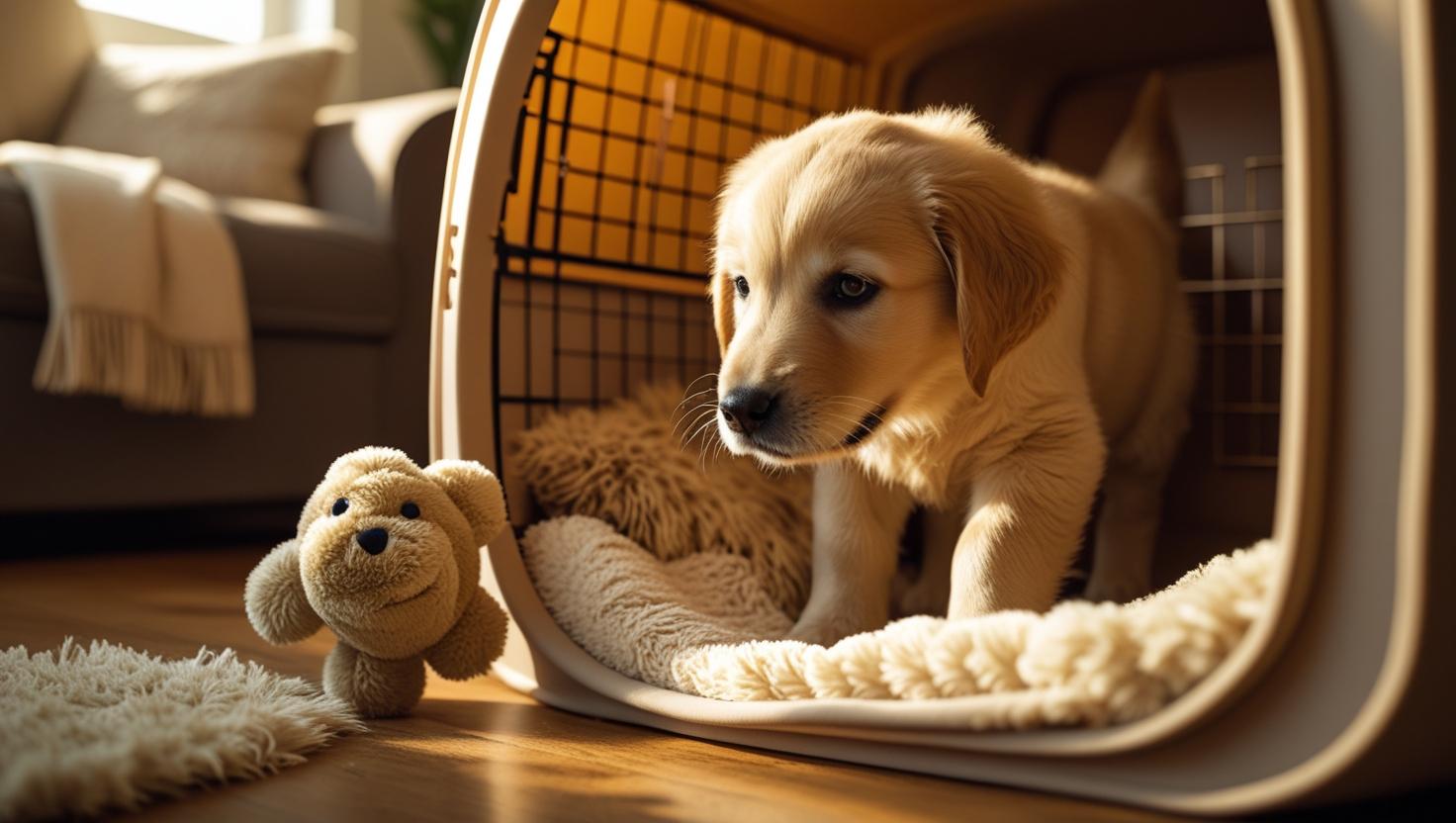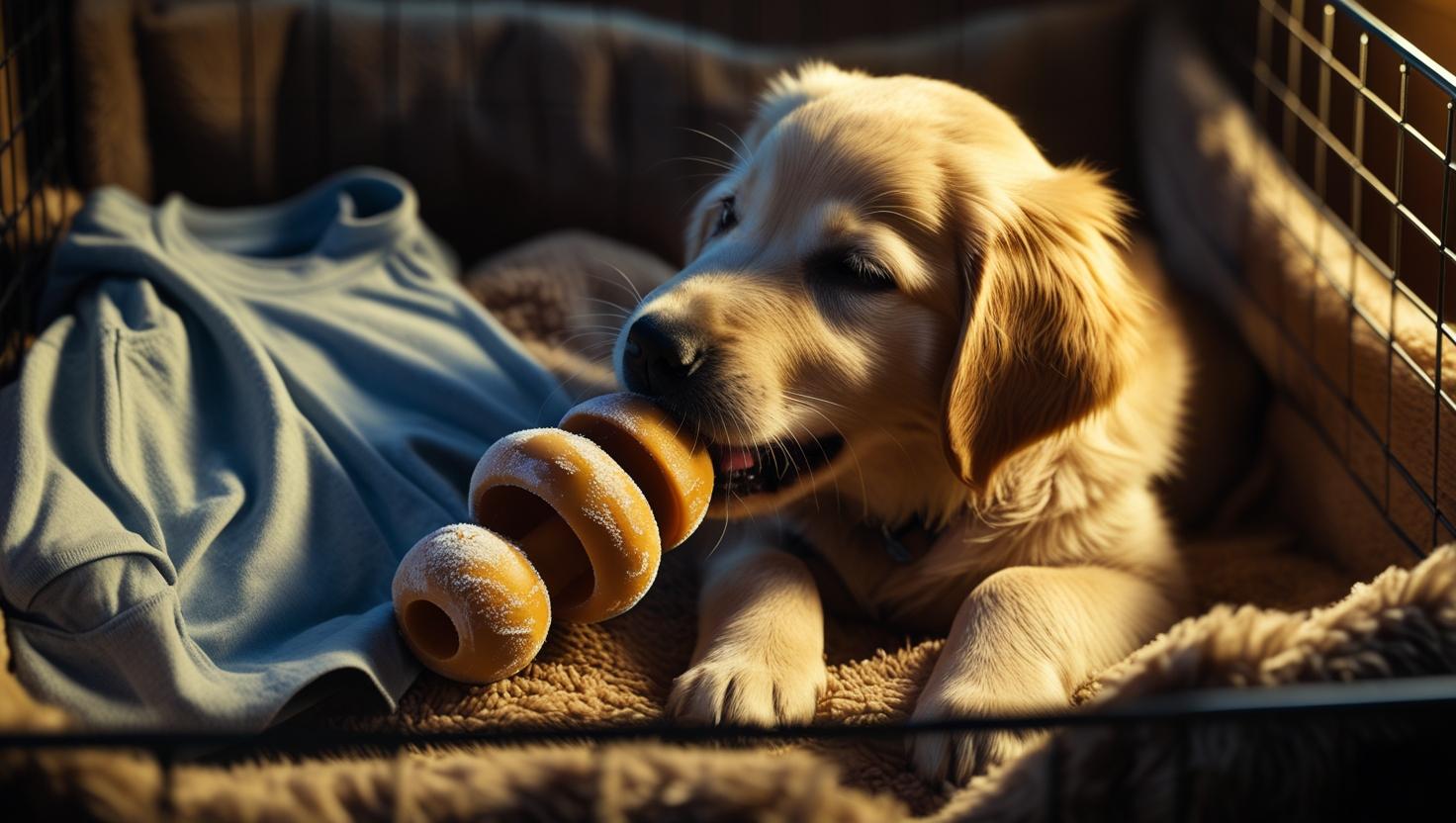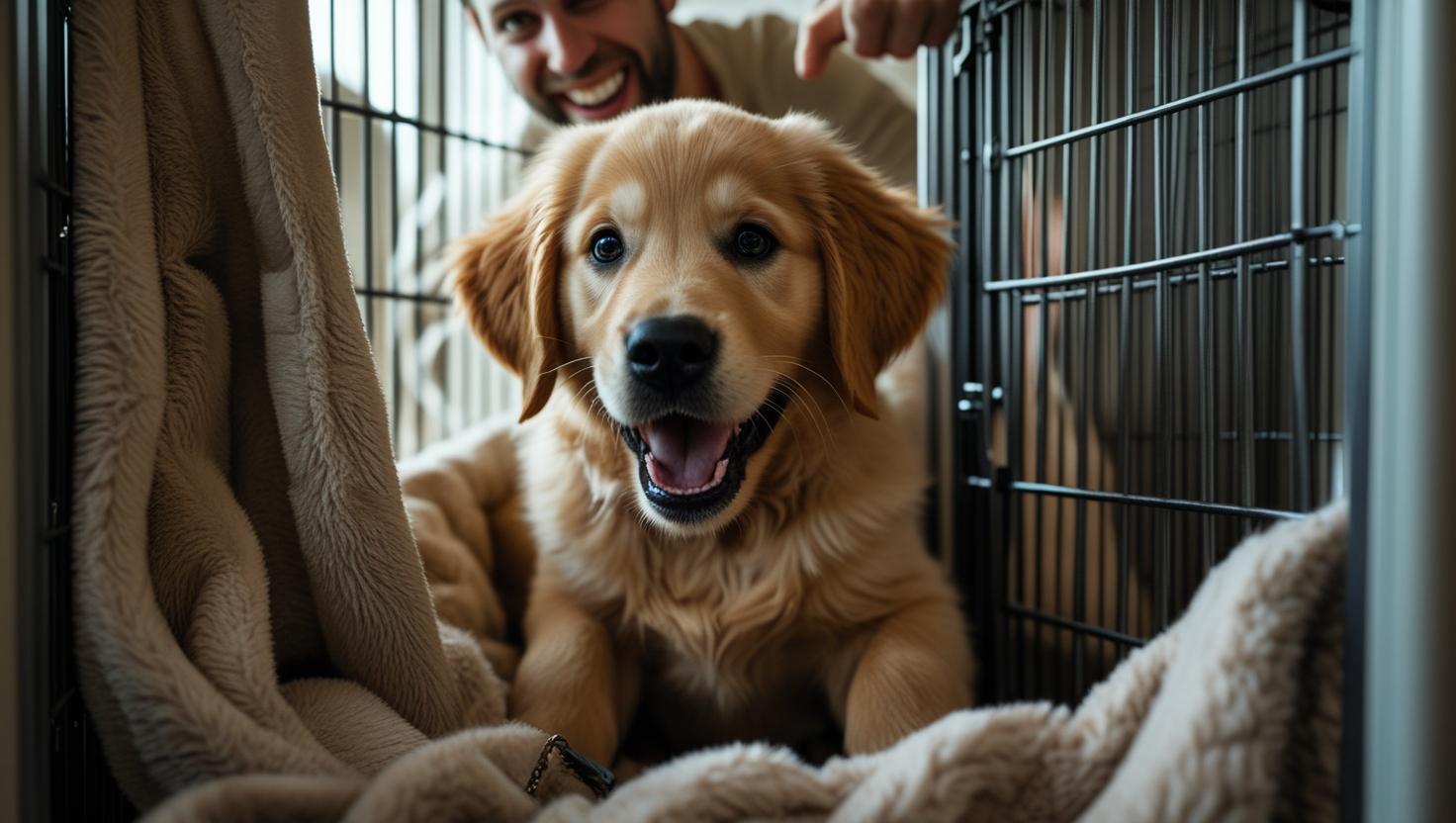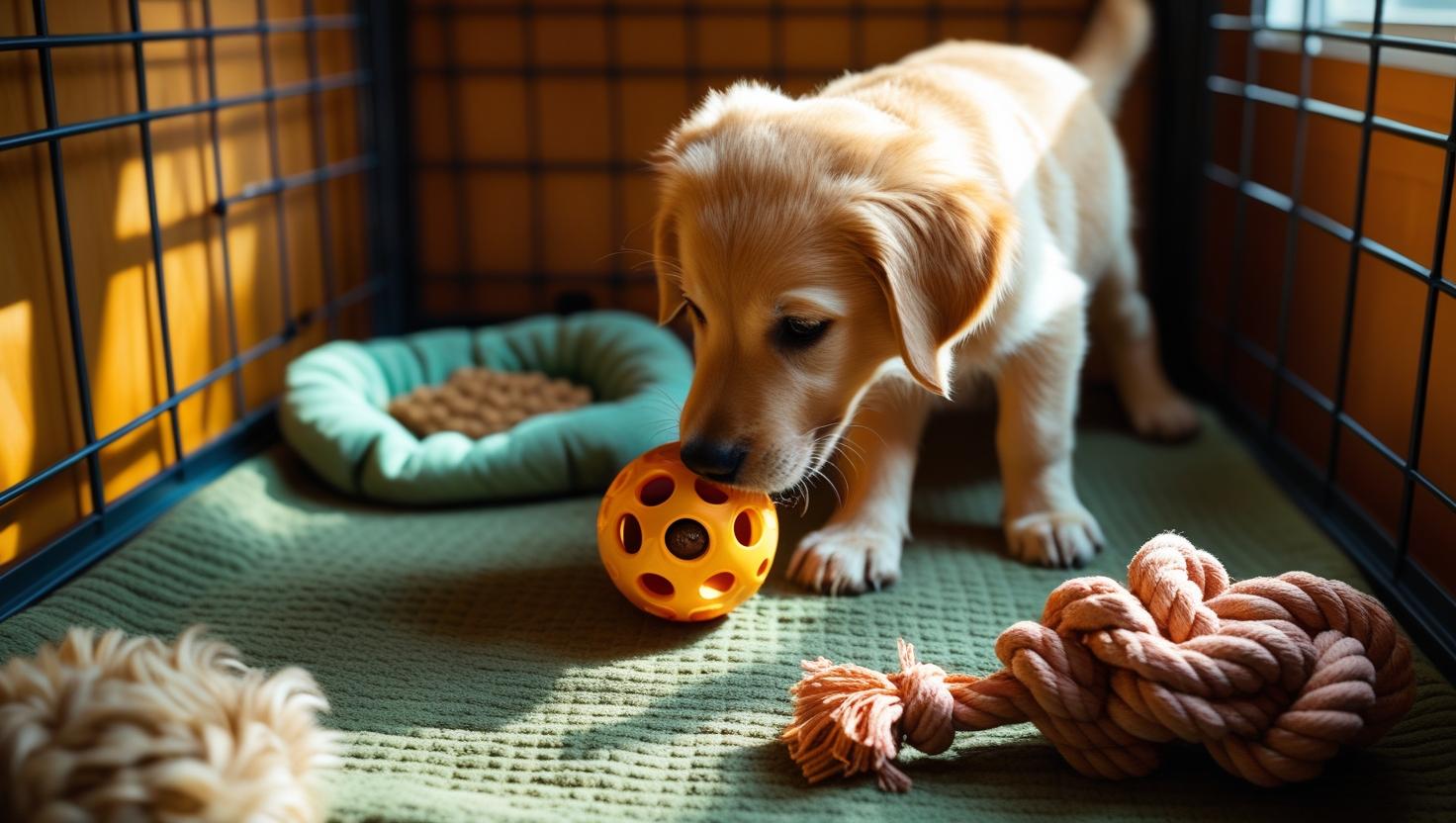What if your dog actually looked forward to crate time instead of whining or scratching to get out? I remember when my pup, Max, used to see the crate as a little prison. It broke my heart. But with a few simple games and the right toys, his attitude completely changed. The crate became a place he ran into happily, tail wagging, because it meant fun, treats, and comfort. If your dog struggles with the same fear or boredom, you’re not alone.
In this post, I’ll share the exact crate games and toy ideas that turned things around for Max, so you can transform your dog’s crate into a space they truly love..
What Are Crate Games for Dogs?
Crate games are fun activities that make your dog feel safe and happy in their crate. They replace fear with comfort and help your pup see the crate as a positive space. Instead of stress, crate time becomes a chance to play, relax, and enjoy.
When I first started crate training Max, he wanted nothing to do with it. He whined, pawed, and looked at me with those sad eyes. I felt guilty every time I closed the door. Everything changed when I tried simple crate games. A frozen KONG with a little peanut butter kept him busy for nearly half an hour. For the first time, he looked calm instead of anxious.
As we tried new ideas, Max’s crate transformed into his favorite place. Treat puzzles challenged his mind and gave him a sense of accomplishment. Hiding small snacks under his blanket turned crate time into a fun treasure hunt. Snuffle mats kept him engaged and relaxed. Even a peek-a-boo game from outside the crate had his tail thumping with joy.
These games did more than keep Max busy. They helped him trust the crate and see it as his own safe space. Over time, he started going inside without being asked, curling up for naps like it was his cozy retreat. That’s when I knew crate games weren’t just playtime. They were the key to making him feel at home.
Benefits of Crate Games for Dogs

Crate Games Made All the Difference
Crate games completely changed how my dog, Max, felt about his crate. At first, he was anxious and cried every time I closed the door. Once we added games, everything shifted.
Reduced Anxiety
Max used to bark and paw at the crate nonstop. That changed when I gave him a frozen KONG with peanut butter. He focused on the treat instead of panicking, and slowly learned to stay calm.
Promotes Rest
Before games, he never relaxed inside. But scent games and hidden treats helped him burn energy and settle down. Soon, crate time became nap time.
Positive Association
What once felt like punishment became comfort. With puzzles, peek-a-boo, and stuffed toys, Max began walking into his crate on his own. One day, I even found him curled up inside without being asked.
More Than Training
Crate games built trust, eased his anxiety, and turned the crate into a safe retreat. Now it’s part of our daily life, filled with comfort and calm.
How to Keep a Dog Entertained in a Crate
The best way to keep a dog entertained in their crate is by mixing comfort with mental stimulation. I learned this with my dog Max, who once hated his crate. With a few simple tricks, crate time became something he actually looked forward to.
Puzzle Feeders
Puzzle feeders gave Max a goal and distracted him from being confined. A treat-dispensing ball kept him rolling it around for 20 minutes straight, tail wagging the whole time. Each new puzzle became a little brain workout that kept him busy and calm.
Frozen Treats
Frozen KONGs stuffed with peanut butter and banana turned crate time into Max’s favorite part of the day. On hot afternoons, I even froze carrots or broth-soaked treats. They kept him happily licking and chewing while I got things done.
Rotate Toys
Max got bored with the same toys, so I started rotating them. One day a squeaky raccoon, the next a rope toy or chew bone. The variety made every day feel new. Sometimes I’d even hide a toy under his blanket to spark his curiosity.
Short Training Sessions
Quick games like “Find it” or “Wait” turned crate time into training time. These mini sessions only lasted a few minutes but gave Max a sense of purpose and pride.
From Boredom to Comfort
Crate entertainment isn’t just about passing time. For Max, it turned frustration into relaxation. Before long, he went into his crate on his own, calm and happy to be there.
How to Make a Crate Fun for a Dog

You can make a crate fun for your dog by turning it into a cozy, playful, and rewarding space. I learned this with Max, my rescue pup who once hated his crate. With patience and a few simple changes, he now runs inside with a wagging tail.
The first change I made was swapping his thin mat for a soft bed and adding one of my old T-shirts so he could smell me. That small touch made the crate feel familiar and safe, and soon he was curling up for naps. Chew toys also helped, especially during storms or when I left the house. They kept him busy and eased his stress, turning crate time into something soothing.
Interactive toys took it even further. A treat-dispensing ball kept Max engaged and proud of himself when he figured it out. Before long, he brought it back to his crate on his own, ready to play again. The biggest shift, though, came when I started using the crate as a reward instead of a punishment. After walks or training, I’d toss in a treat or favorite toy, and he’d trot in happily.
Over time, the crate became more than just a tool. It turned into a space Max loved, a place for comfort, play, and quiet moments of rest.
What Is the 7 7 7 Rule for Dogs
The 7 7 7 rule helps puppies grow confident by introducing them to 7 new people, 7 new places, and 7 new things within the first 7 weeks. Each experience builds trust and reduces fear.
When I brought Max home, I didn’t know about this rule, but I did something similar. He explored new backyards, met neighbors with treats, and discovered everyday objects like brooms and toys. Each moment boosted his confidence.
I used the same idea with crate training. A toy or treat inside made him curious, and moving the crate to different spots kept it familiar. Soon, Max saw the crate as safe, not scary.
That’s the power of the 7 7 7 rule—simple steps that shape a calm, happy dog.
Do Dogs Get Bored in a Crate?

Yes, dogs can get bored in a crate. I learned this with Max during our first weeks together. A cozy bed wasn’t enough. He needed something to do.
One day, I came home to find him chewing his mat and scratching the door. He wasn’t being naughty, he was bored. That’s when I realized crate time had to be engaging.
I gave Max a puzzle toy filled with kibble and added a safe chew toy, rotating them every few days. I also played simple crate games, like hiding treats under his blanket or tossing them in from a distance.
These small changes made a huge difference. Max stopped whining, settled faster, and even walked into the crate on his own. With a little creativity, the crate went from a dull box to a fun, comforting space he loved.
Why Is My Dog Crying in the Crate?
If your dog is crying in the crate, it usually means they need something, comfort, attention, or a way to pass the time. When Max first started crate training, the crying was heartbreaking.
Some of it was boredom. The crate felt empty, so I added puzzle toys and chew toys. He focused on those instead of whining, and the crying faded. Other times it was anxiety, especially when I left the house. Covering the crate with a blanket and leaving a piece of my T-shirt helped him feel safe and calm.
Early on, Max also cried because everything was new. Patience, short sessions, and rewarding calm behavior gradually helped him adjust. Establishing a routine and rotating toys kept him interested, and over time the crate became a cozy, happy space.
Crying is your dog’s way of communicating. With kindness, consistency, and a few simple changes, it can turn into quiet contentment.
Last Word
Crate time doesn’t have to be a struggle. It can actually be one of the best parts of your dog’s day. When I started using crate games and fun toys with Max, everything changed. He became calmer, happier, and more relaxed inside his crate.
Keeping your dog mentally active and emotionally comforted during crate time is key. Using interactive toys and positive experiences helps your dog see the crate as a safe, enjoyable space, not a place to fear or avoid.
Be sure to switch up toys regularly and watch how your dog responds. If they seem bored, try something new to keep their interest. With some patience and creativity, you can make crate time something your dog genuinely looks forward to. It’s a wonderful way to build trust and keep your furry friend happy and content.

DM Sohel Rana is a seasoned product reviewer and content creator with over six years of hands-on experience in health, fitness, pet care, skincare, and everyday consumer products. Since 2019, he has been dedicated to testing, analyzing, and sharing honest insights based on real-life use, helping readers make smarter purchasing decisions.
With a strong focus on research-backed reviews and practical guidance, Sohel blends personal experience with expert-level evaluation to deliver trustworthy content. His work reflects a commitment to transparency, authenticity, and reader-first value ; ensuring every recommendation is practical, safe, and reliable.
When he isn’t reviewing products, Sohel enjoys exploring wellness trends, caring for pets, and discovering innovative solutions that simplify everyday life.


